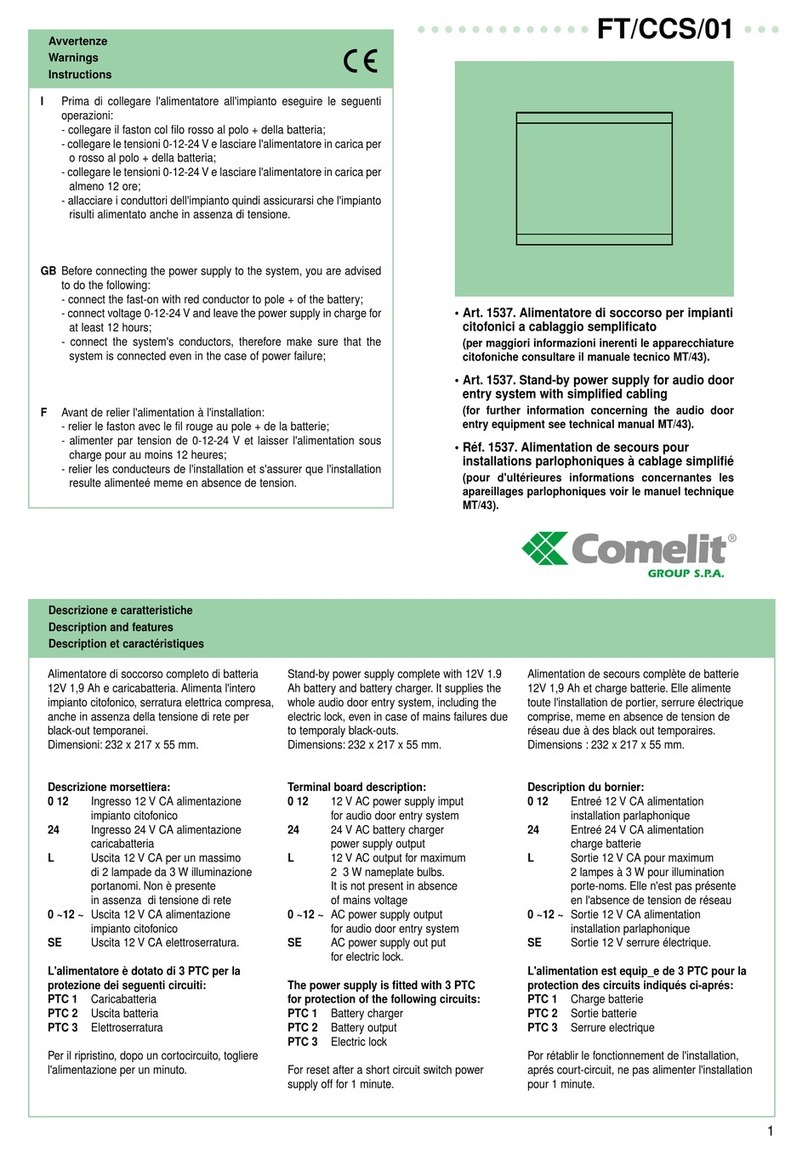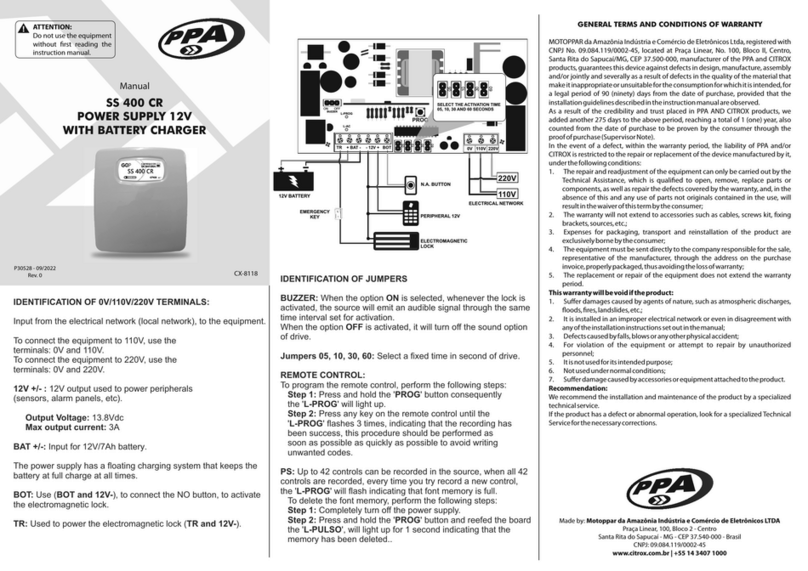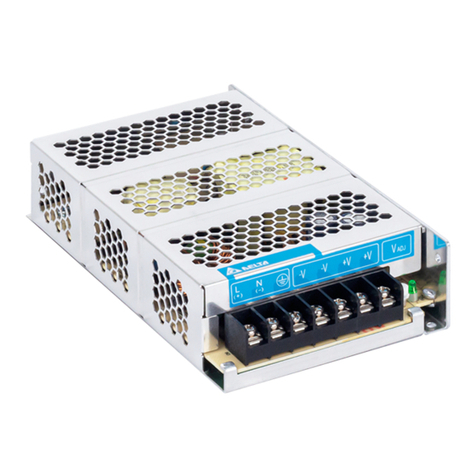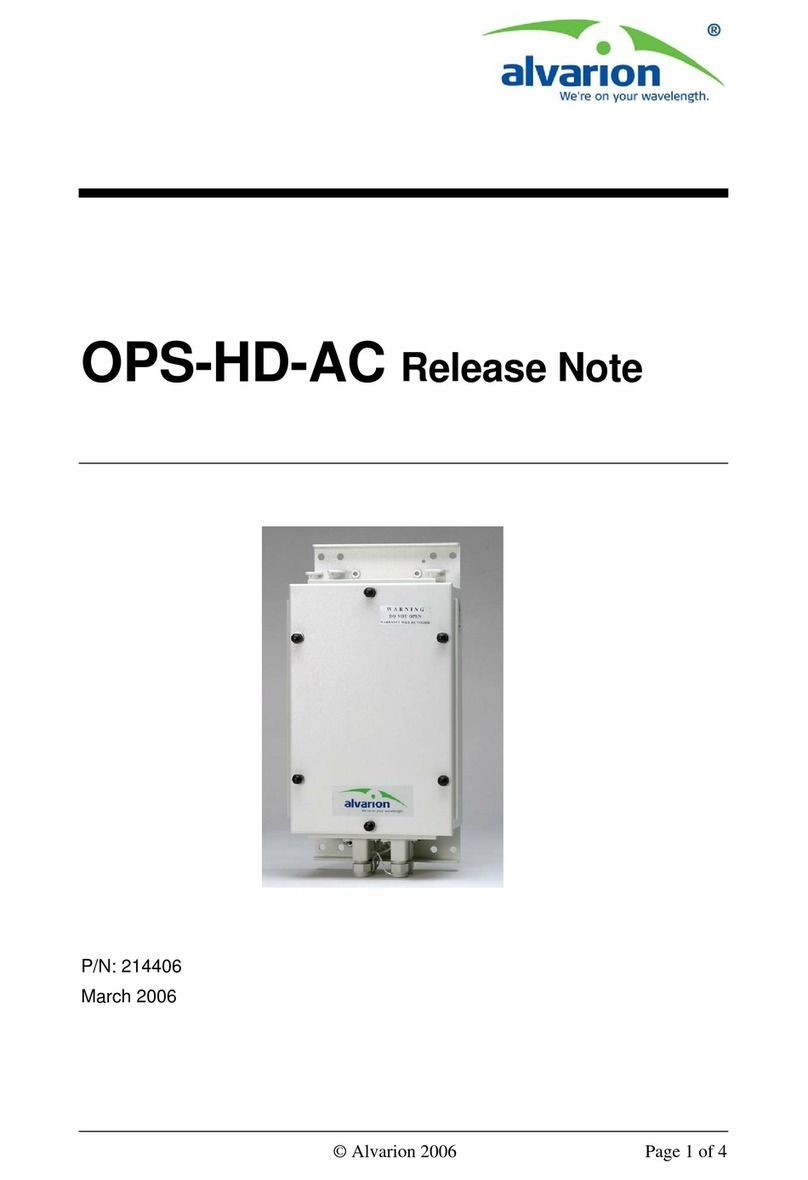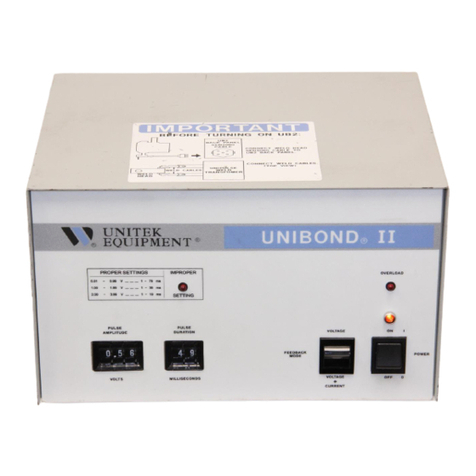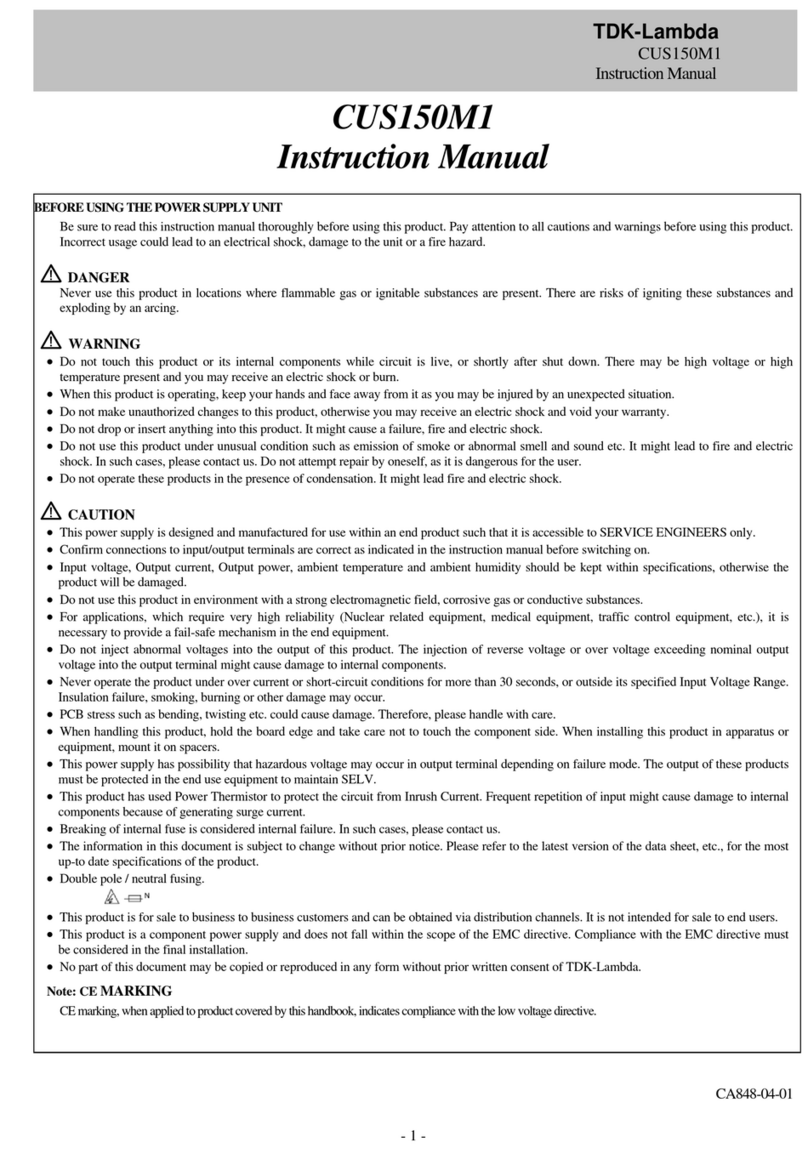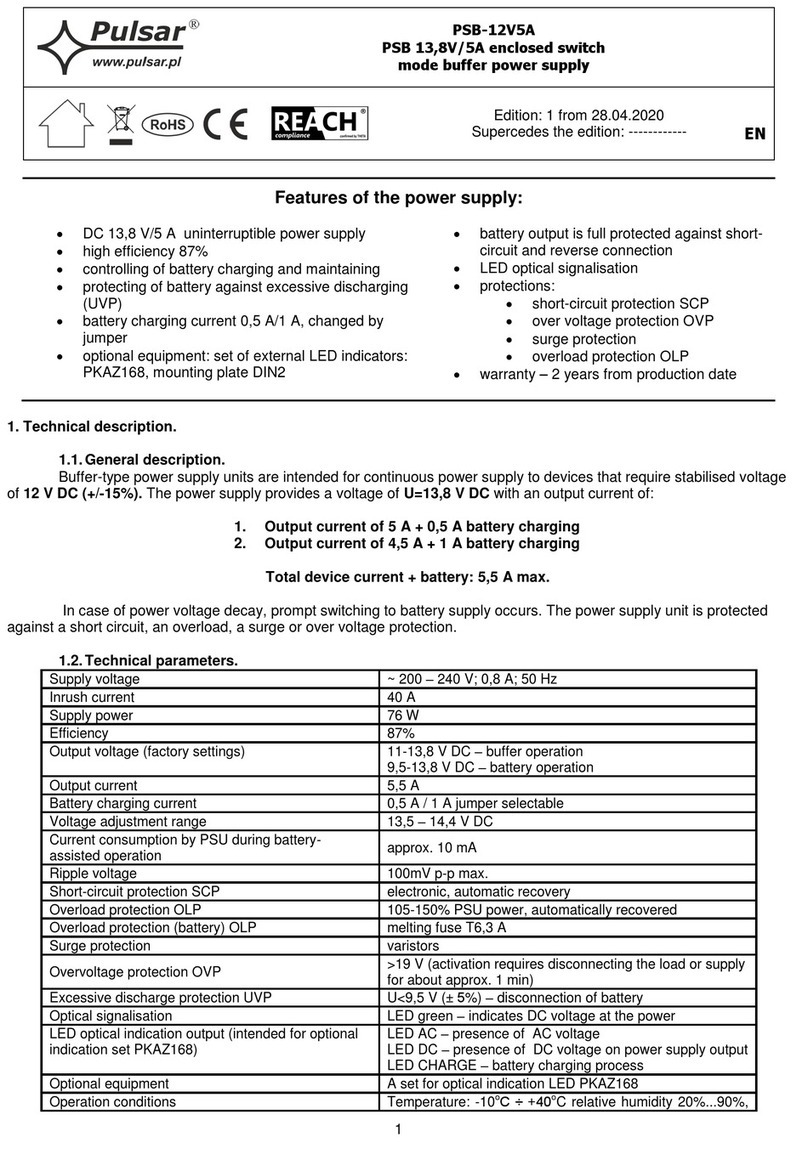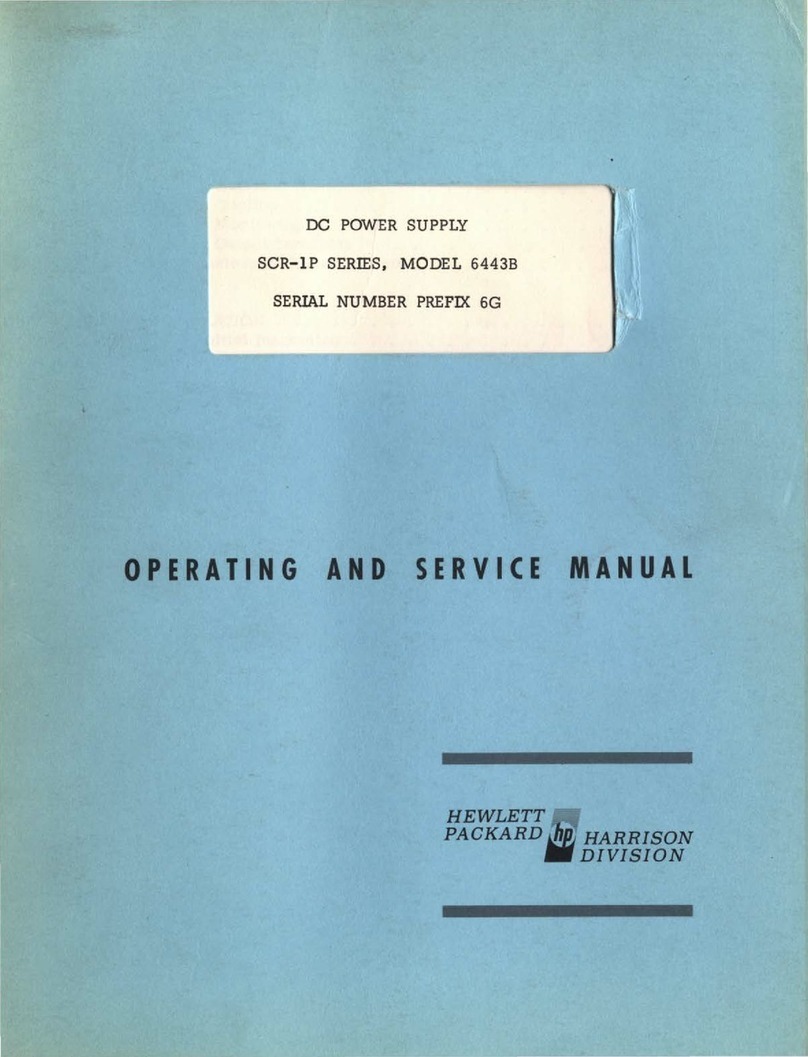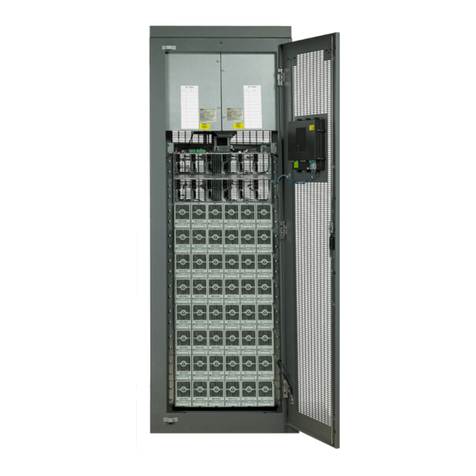Daxten THERMAL OPTIMISATION User manual

1. Thermal analysis
2. Cold-Aisle-Containment
3. Seal open rack units in cabinets
4. Optimise airflow through perforated floor tiles
5. Sealing cable openings in the raised floor
Thermal Optimisation
in the Data Centre
Best Practices for achieving optimal cooling performance and
significant energy savings in your data centre

52 Daxten | Thermal Optimisation Best Practices
Why is the optimisation of cooling in your data centre
essential?
Data centres contribute significantly to world-
wide energy consumption. Analysts from IDC
and Gartner state that two percent of total
energy consumed worldwide is caused by
data centres. This share is expected to double
within the next five years. The increase in CO2
emissions will have a profound impact on the
costs for companies, their data centres, and
the ecological and environmental communi-
ties at large. Energy costs for data centres
have climbed to represent 20% of the total
operation expenses in many companies. In the
short- and mid-term, this share will increase
to 30% or more. Ignoring these statistics and
failing to optimise will result in unnecessary
operating expenditure for your company. According to Gartner, a staggering 40% of the total energy costs of any given data
centre are incurred through cooling. Small investments and short amortisation periods are the most efficient method of
cooling optimisation. This increase in efficiency is achieved by adhering to the following best practices:
1. Best Practice:
Thermal analysis
When using hard facts, all attempts in optimisation will succeed. For this reason we offer you a thermal analysis.
Our certified specialists will carefully explore your IT environment, examining the airflow both within the floor plenum
and above the raised floor to identify bypass airflow, loss of cooled air and hot spots. Measurements are taken at
various locations such as 19” racks and CRAC units throughout your datacentre. Based on the findings, our specialists
will work with you to compile a catalogue of techniques and products that allow you to reduce a large portion of your
energy costs and to increase the efficiency factor of your cooling systems.
In 2010 the rate of energy costs in data centre will be more than 30% of the
whole IT budget. Thereof the portion of cooling will be 40%.
Source: IDC, 2007

2. Best Practice:
Cold-Aisle-Containment
To best realise a green computing environment and to decrease the energy consumption in a datacentre by
more than 30% the US-American Uptime Institute recommends arranging the server cabinets in aisles and separating the
hot cabinets from the cold cabinets, sealing the cold aisle. One method for this separation is a complete cold aisle contain-
ment created with aluminium profiles and solid
panels for the ceiling and racks. However, there is
a more cost efficient alternative that produces a
similar efficiency factor. By mounting a CoolCon-
trol Curtain, you can seal the cold aisle and make
a wise investment all at once. The CoolControl
Curtain fits to any dimension of current server rack,
meaning it can be retro-fitted to existing 19”
cabinets irrespective of size or manufacturer.
Recirculation of hot air causes high
hardware failures and is expensive
Active IT hardware takes the cooled air
in at the front of the racks. As the cool air travels
through the hardware, the air is heated and ex-
hausted at the back of the rack. As hot air rises up
the rear of the 19” cabinet, it flows over the top or
around the side of the cabinet and recirculates to the front of the rack in the cool aisle again. The hot air can also recir-
culate to the cold aisle through non-sealed openings between servers or vertical profiles in the cabinet. As this process
repeats itself, the temperature in the cold aisle gradually rises. Traditionally, increasing cooling output is the only way
to prevent overheating. Unfortunately, increasing cooling output increases energy consumption and your energy bill.
Cold Aisle Containment reduces the cooling consumption by up to 30 percent
It is essential to hermetically separate the hot air from the cold aisle. This separation can be done reliably with
the CoolControl Curtain. With constant cooling capacities, measurements show the temperature difference between the
hot and cold aisle are 10-15 degrees Celsius. Depending on the size and environmental specifics of individual data centres,
the cooling requirements and energy costs could be decreased by as much as 30%.
53 Daxten | Thermal Optimisation Best Practices
An example of cold aisle containment
with a PVC curtain.
Hot air recirculates into the cold aisle.
A separation of the hot from the cold aisle is a standard
in modern datacentres.

Play it safe: Test before installing a complete cold aisle containment solution
For companies who want to first test the efficiency of cold aisle containment the CoolControl Curtain is ideal.
With the curtain, facility managers and IT managers can measure the actual savings and efficiency factors without
placing strain on their budgets.
Highlights
• Cost-saving separation of the hot and the cold aisle (H/CAC)
• Prevents recirculation of hot air in the cold aisle
• Temperature difference between hot and cold aisle: more than 10° and 15°C
• Up to 30% energy savings
• Significant increase in cooling system efficiency
• Easily installed: in hours not in weeks
• No downtime required for installation
• Ideal as test installation to measure cold aisle containment results
• Compatible with all rack dimensions and vendors
3. Best Practice:
Seal openings in the front of 19” cabinets
PlenaFill blanking panels and PlenaForm air baffles are indispensable tools that increase the efficiency of hot
aisle / cold aisle containment (H/CAC) and for general optimisation of data centre airflow.
PlenaFill® blanking panel
PlenaFill is an inexpensive solution for sealing the openings between
servers preventing recirculation of hot air through the cabinet. The physical
barrier keeps cold air at the front of the cabinet separated from the hot air at
the back. This prevents hot spots and helps prevent hardware failures or
downtime caused by overheating.
PlenaFill is critical in separating hot and cold air areas in the server
racks, which leads to an optimal cooling efficiencies. When PlenaFill
blanking panels are deployed throughout the data centre, cooling units can
operate more efficiently resulting in energy savings.
PlenaFill blanking panels are made from lightweight non-flammable
(fire rated to UL94-V0) material and can be installed into any 19” rack
without tools. Each blanking panel is 27U with air tight perforations every
1U which can be torn to create smaller panels from 1U upwards. This patent
protected and flexible design along with tool-free rivets makes for quick and
easy installation.
4 Daxten | Thermal Optimisation Best Practices
PlenaFill panels prevent the recirculation of hot
air into the cold aisle.

5
5 Daxten | Thermal Optimisation Best Practices
A server cabinet sealed with PlenaFill.
PlenaFill Highlights
• Prevents hot and cold air mixing caused by bypass airflow
• Fire rated to UL94-V0
• Tool free installation
• Each panel covers 27U - separable in 1U sections
• Easy to install in all 19” EIA racks
• Extremely inexpensive, with high efficiency factor and quick ROI
• Cost effective compared to metal or plastic blanking panels.
PlenaForm® - Airflow Diffuser and Raised Floor Baffle
PlenaForm is an airflow baffle that helps to guide airflow under the raised
floor to the server racks. By directing the airflow, cooled air will not escape into
unused areas in the raised floor increasing air pressure. Cooled air is directed
effectively and efficiently to the openings in the raised floor where it is needed
most.
PlenaForm is a flexible airflow baffle system which helps to solve dynamic
thermal imbalances in data centres. The baffles are die cut both vertically and
horizontally in sections that can be removed to correct sizes for installation under
the plenum. These individual sheets can be joined together creating impenetrable
air barriers. PlenaForm baffles are constructed of a flame retardant polypropylene
compound that is inert, non-conductive, and non-hygroscopic with a UL94-V0
rating.
PlenaForm Highlights
• Control and balance data centre airflow
• Separate hot aisles from cold aisles
• No installation tools required
• On-site configurable (width and height)
• Fits any raised floor pedestal
• Reduces energy consumption and operating costs
• An inert, non-conductive and non-hygroscopic material
• Flammability rating of UL94-V0
• RoHS and WEEE compliant
• An energy saving and thermal tuning tool
PlenaForm controls and balances airflow
in the raised floor.
PlenaForm fits any raised floor pedestal.

4. Best Practice:
Optimise airflow through perforated floor tiles
To ensure cooled air makes its way through the front of the
cabinets and servers with ample pressure, it is necessary to have high
density perforated floor tiles. To create an optimal pathway, it is
advised to use high density airflow vented floor tiles which allow high-
plume stratification. While conventional vented floor tiles achieve
airflow rates of 20-30%, our solutions provide up to 65% airflow. The
higher the flow rate, the higher the volume of cold air that reaches
your rack equipment. It is critical that the vented floor tiles provide
enough cold air via high-plume stratification. Only then can the cold
air reach the top of the cabinets to cool the upper most hardware.
Sufficient cold air is the primary factor in preventing system failures
and downtime created by overheating. The formula for the best choice
of vented floor tiles is simple: Higher airflow rate and air pressure
equal lower required cooling capacity resulting in increased energy and cost savings.
Not only does the airflow
rate matter, but also the strength
of the perforated floor tiles. These
panels often carry fully loaded cabinets.
Conventional vented floor tiles manage to carry a maximum weight of 200 - 300kg - without tightened
edges. Our CoolControl Vented Floor Tile can reliably carry between 680 and 1360kg. Of course easy
access is also required. The patent protected integrated Lift-n-Lock® handles allow you to lift the floor
panel without any tools.
Airflow panel Highlights
• Optimised hi-plume stratification fins
• Airflow rate up to 65 percent
• Integrated dual Lift-n-Lock® handles
• Protects cabinet hardware against overheating and downtime
• Optional dampers to reduce airflow
• Significant reduction of energy consumption and costs
• Ultimate load of up to 1360kg
56 Daxten | Thermal Optimisation Best Practices
High-end airflow panels grant for airflow
rates up to 65 percent.
Airflow panel with an airflow rate up to 65%.
Airflow panel with an airflow rate up to 56%.
Solid Panel supporting loads up to 1360kg.
1 2 3
1
2
3

5. Best Practice:
Sealing cable openings in the raised floor
The majority of companies today are investing in expen-
sive cooling technologies to ensure the active hardware in the
racks can operate in a cool environment without failure. In spite
of these expensive investments, companies suffer from over-
heating and system failure caused by hotspots in the data centre.
The culprits are almost always unsealed or insufficiently-sealed cable
openings in the raised floor. The Uptime Institute states that up to 63%
of expensive cooled air is lost through unsealed cable openings; this condi-
tioned air is therefore no longer available for cooling vital locations and cabinets
where servers are located.
Sealing openings puts an end to bypass airflow
Conventionally, these problems have been solved
by increasing the capacity of the cooling systems. Often
companies invest in additional cooling units to maintain
air pressure and air flow. However, this can be done much
more efficiently and at a lower price. Our solutions easily
close and seal cable openings. Your data centre will be
protected against the loss of cooled air, the formation of
hot spots and the risk of downtime. All of this can be done
using existing cooling units while significantly increasing
capacity and increasing efficiency.
Installed in seconds with immediate effects
Our sealing solutions consist of a special filament that seamlessly encloses cables and other equipment
protruding through the raised floor. The system is installed quickly using
a simple installation procedure. This can be either retro-fitted to existing
cabinets without the need for downtime or put into new openings.
57 Daxten | Thermal Optimisation Best Practices
The split seal solutions are ideal for
the usage in existing cabling infrastrcutures.
Sealing cable openings Highlights
• Up to 60% higher energy efficiency in the data centre
• Reliable sealing of openings in the raised floor and elimination of bypass airflow
• Prevents system failures and downtime caused by overheating and hot spots
• Significant increase in under floor air pressure.
Bulky cable bundles are reliable sealed air-tight with
Daxten solutions.

58 Daxten | Thermal Optimisation Best Practices
Your benefits and advantages:
4Significant optimisation of your cooling infrastructure
4High energy costs saving potentials
4No bypass airflow
4Prevents hot spots and associated downtime
4No need for additional cooling systems
4Minimum investment with maximum cost effectiveness
4Quick ROI
4Increased energy efficiency so you are well prepared for the future
Contact us for further information and your cost free individual consultancy appointment
at +44 (0)20 8991 6200, [email protected] or www.daxten.co.uk
Table of contents
Other Daxten Power Supply manuals

